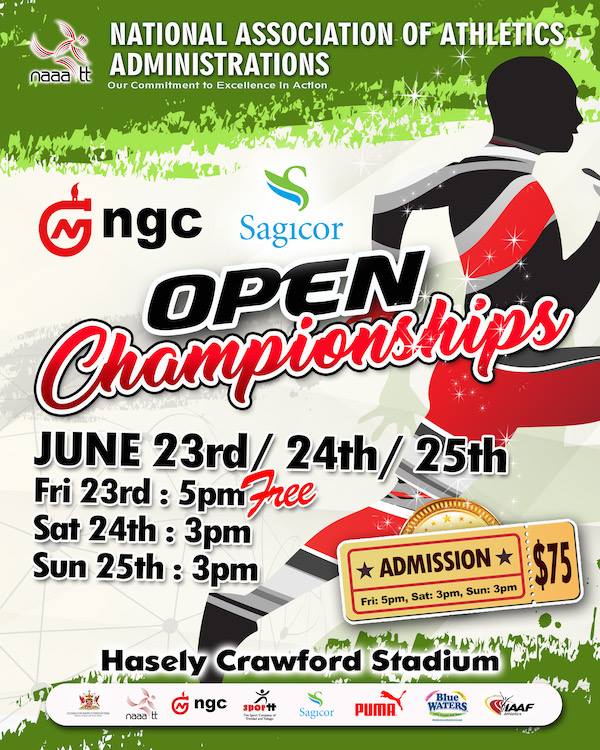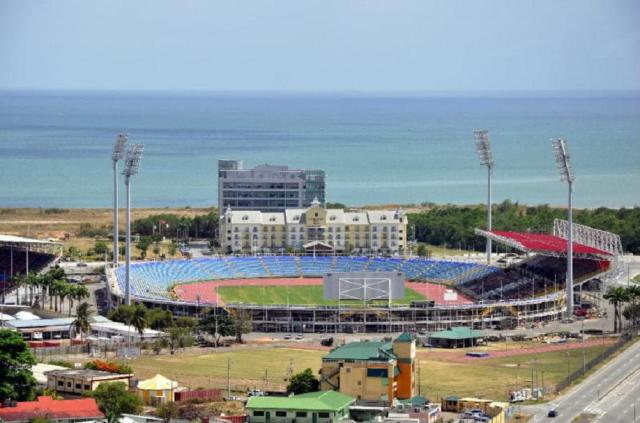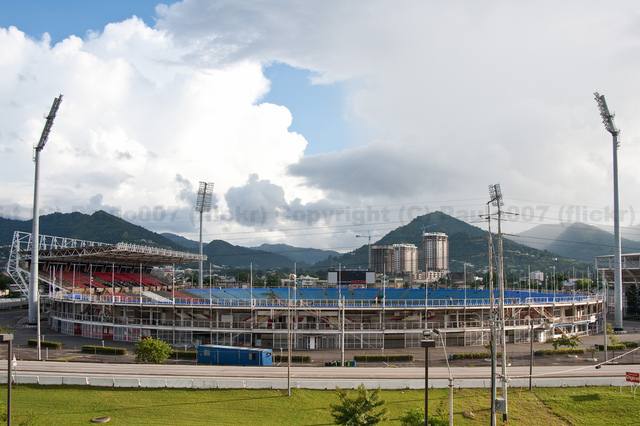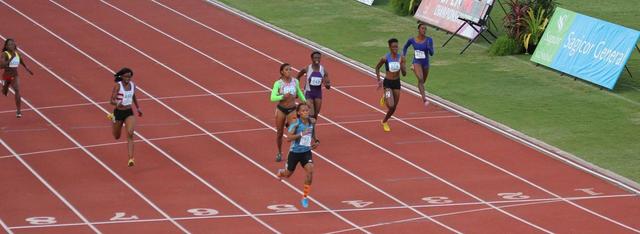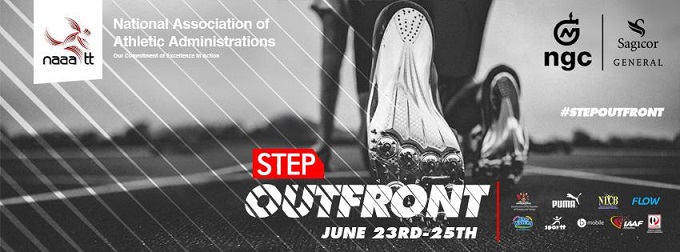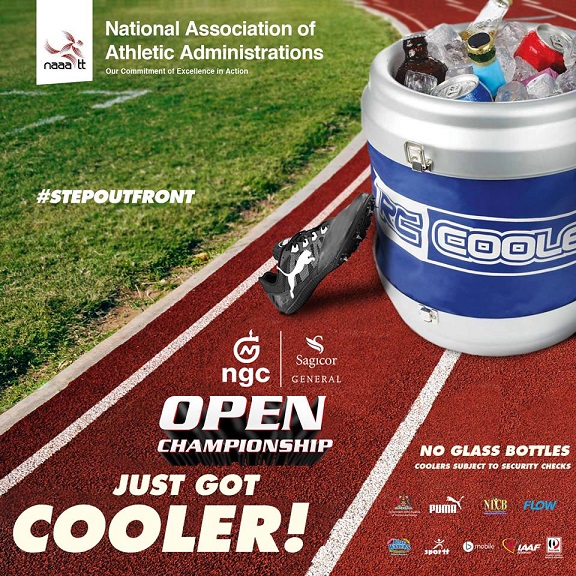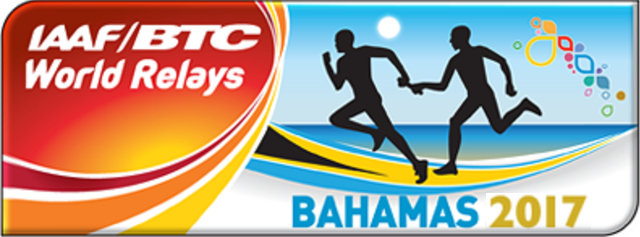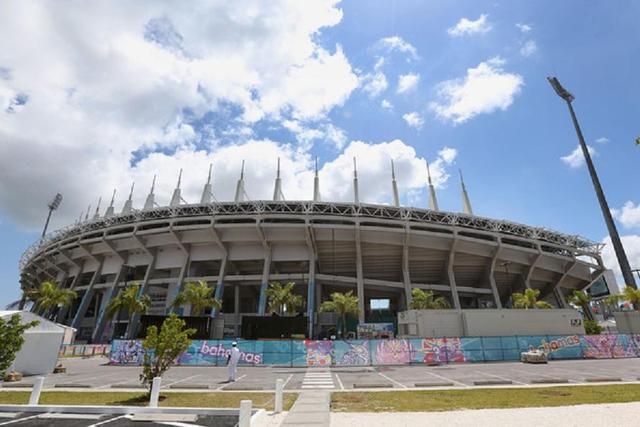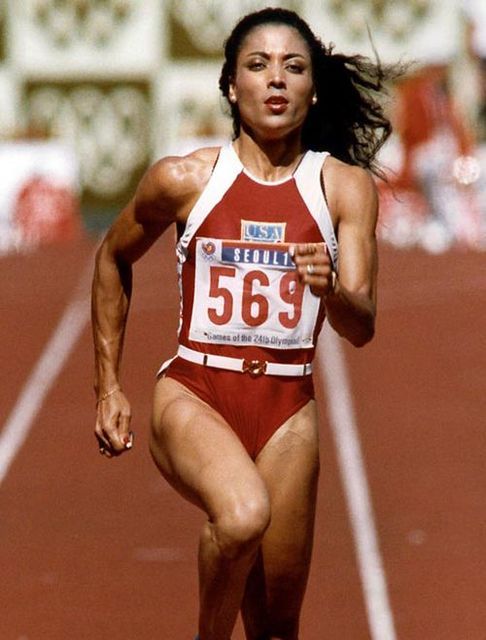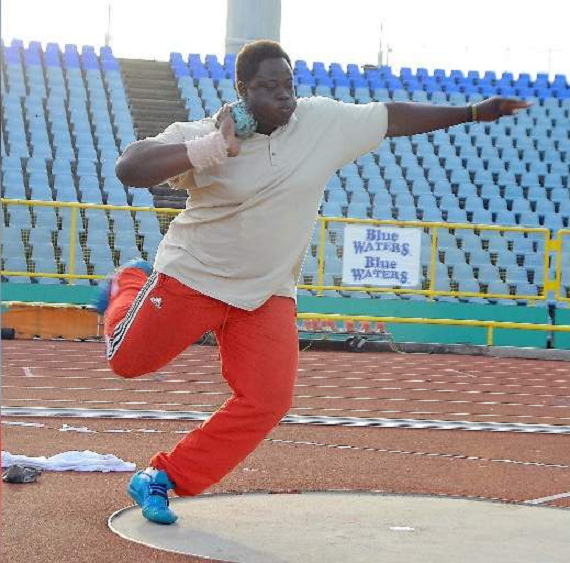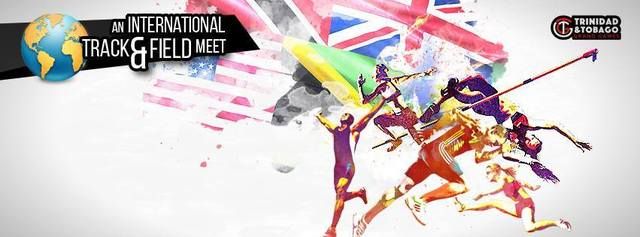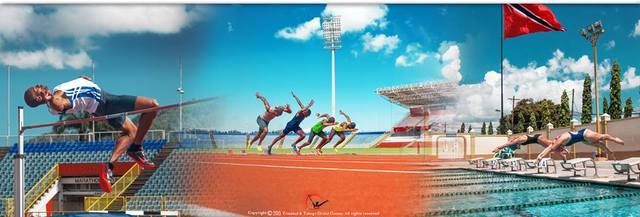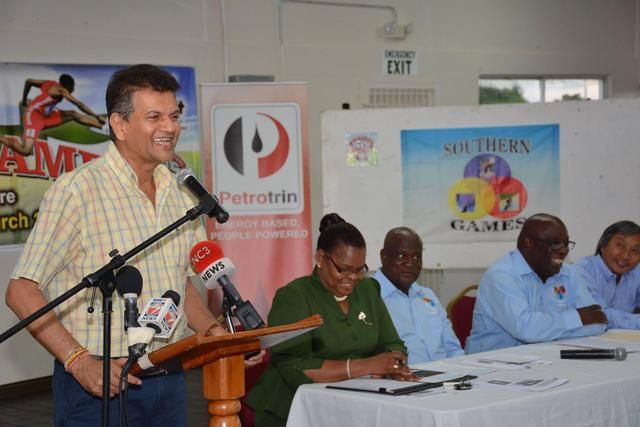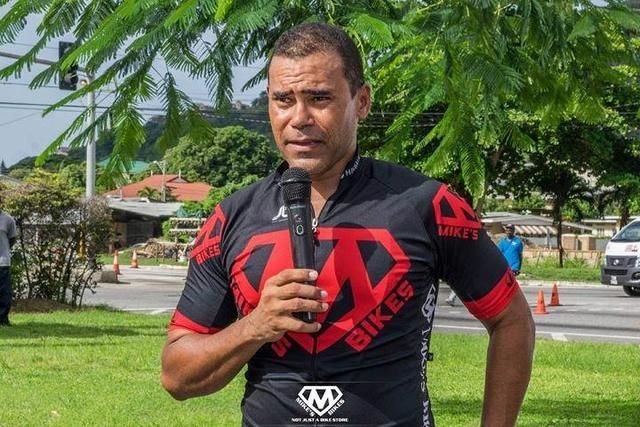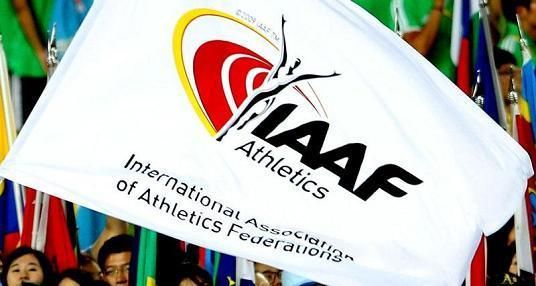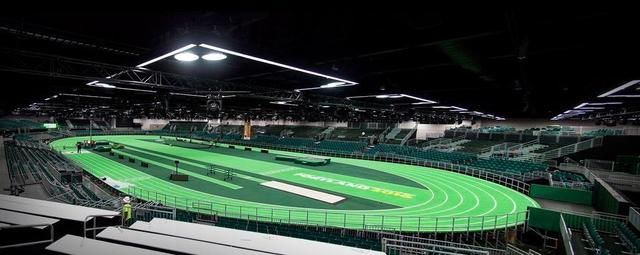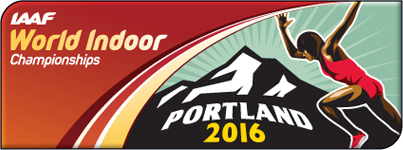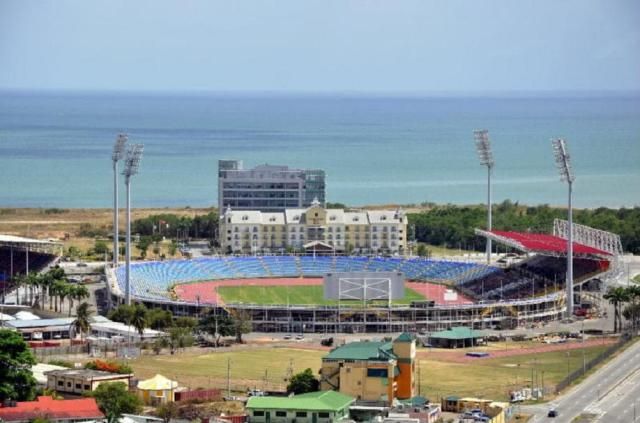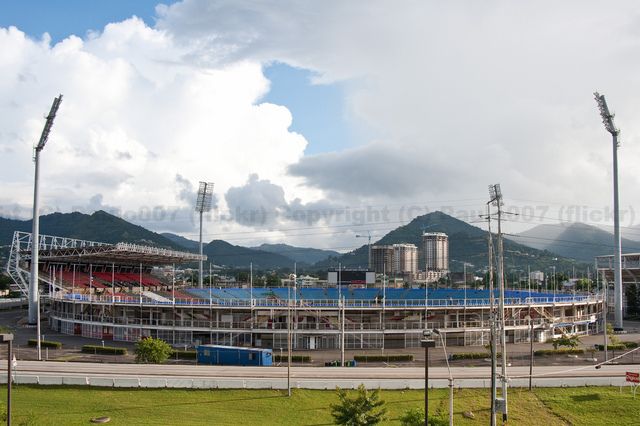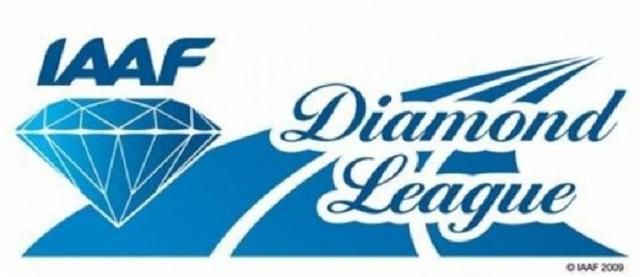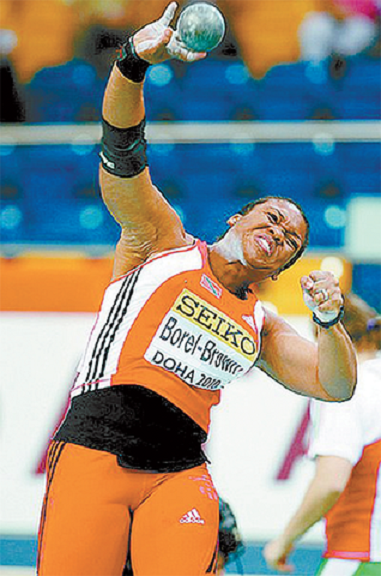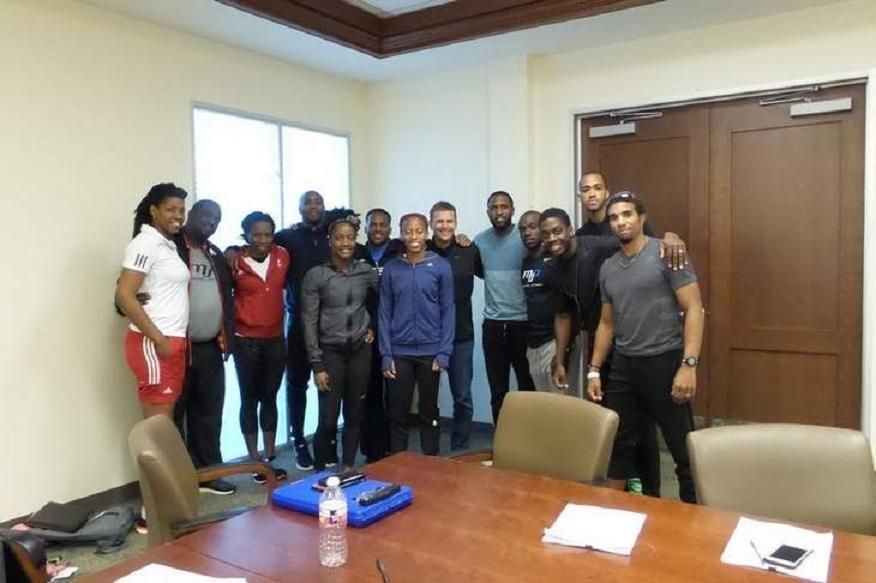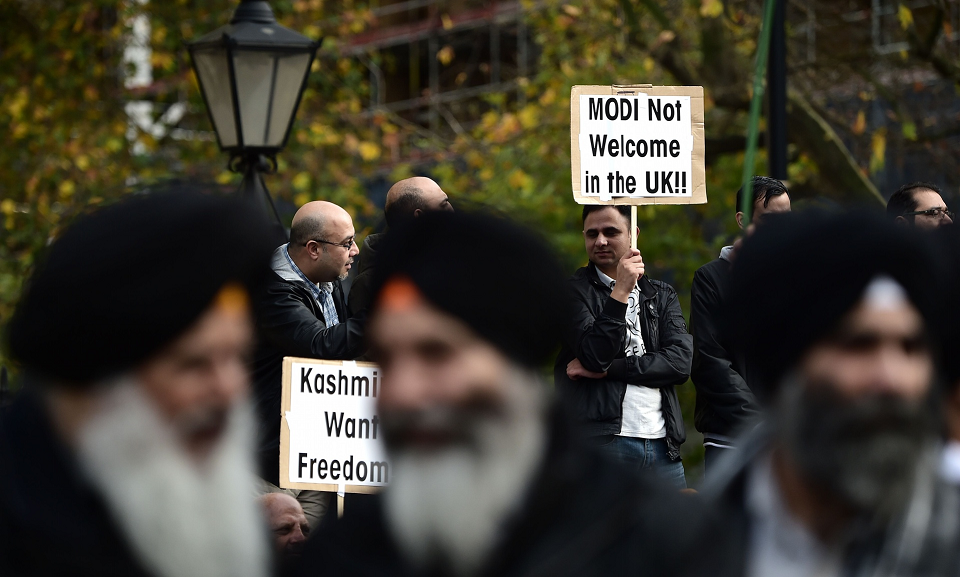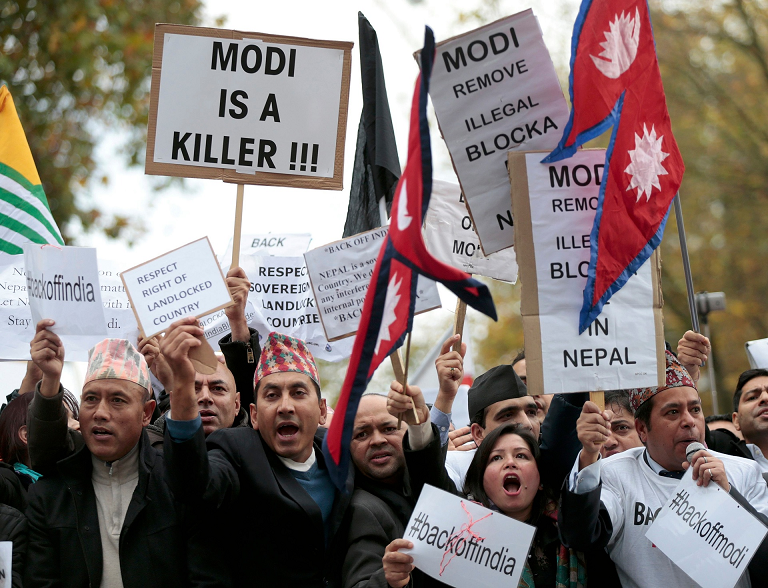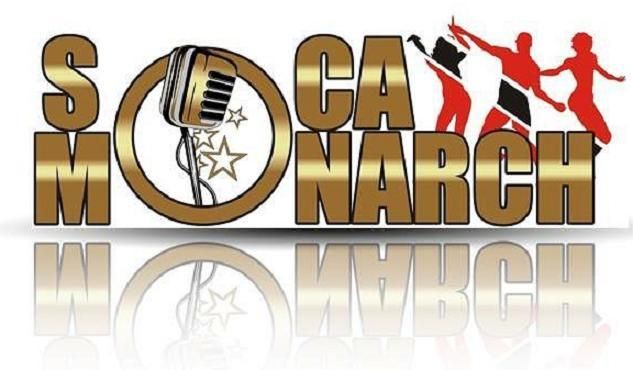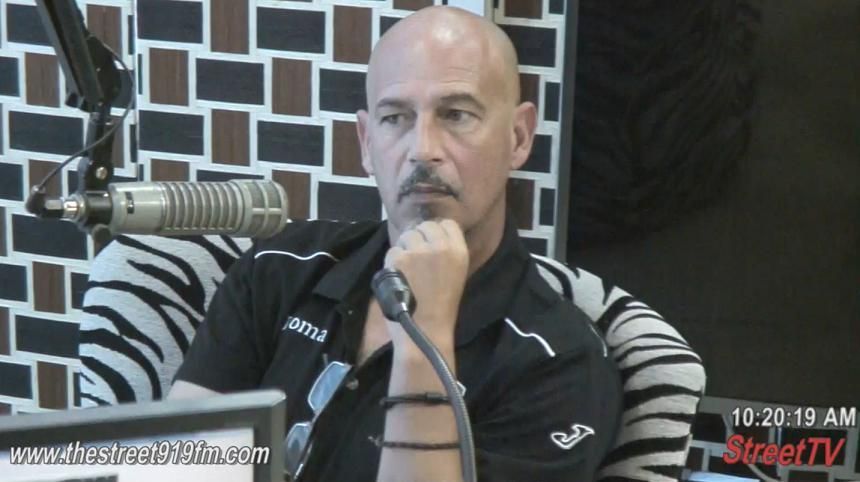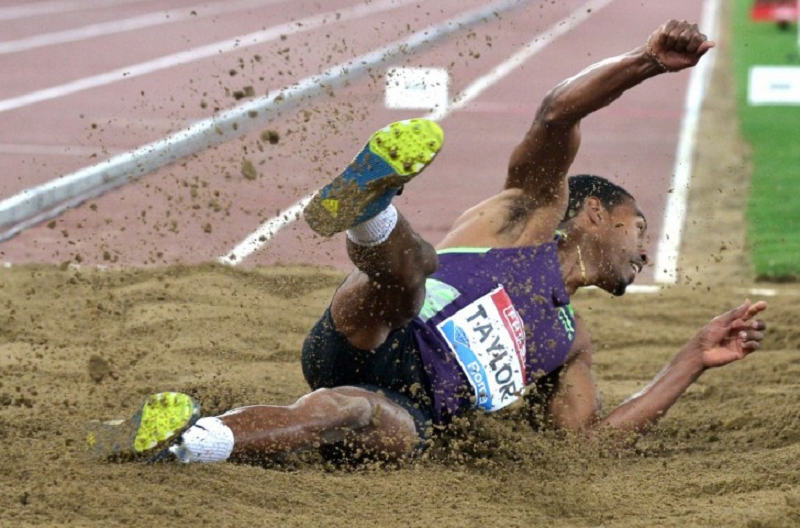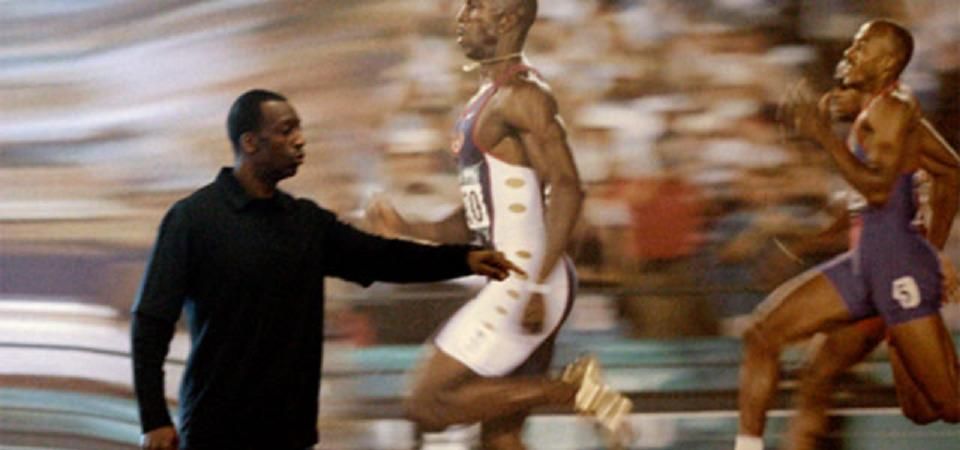I compiled this useful list with dates, etc. Had to do research to get accurate population growth information over the years. Its an interesting educational exercise going through this list as it helps you to better understand how T&T's population has grown over the years influenced by the economy, labour demands and the politics of the day.
Have a read thru the list and post what you think about anything you have learnt.
Is it informative and did it help you to understand T&T a bit better population wise, culture wise and politics wise?
I may also decide to add T&T's major sporting achievements over the years to this list when I get the time.
Summary of Trinidad & Tobago's History
(Especially relates to Africans and East Indians settling on the islands)1498 - Christopher Columbus claims Trinidad for the Spanish Crown. On July 31st, during his third voyage to the Western Hemisphere, Columbus arrived at an island he named La Trinidad (meaning the Holy Trinity) because of its 3 distinct mountain ranges. Before the arrival of Columbus the island was also referred to by the native Amerindians as "Iere" meaning "Land of the Humming Bird".
1510 - Trinidad reported by Spanish to be very densely populated with approximately 35,000 Native Indians (Amerindians) who are mostly peaceful.
1511 - The "peaceful Indians" in Trinidad are re-classified as Caribs (who are more war-like) and so fair game for slavers. As a consequence of this, Trinidad became the focus of Spanish slaving raids, primarily to supply free workers to Margarita's pearl fisheries. This process in addition to the introduction of European diseases causes the rapid depletion of the local/native Amerindian population.
1530 - The Spanish king appointed the conquistador Antonio Sedeno to be Captain-General of Trinidad for life, with a mandate to subdue the unruly natives. Sedeno struggled gamely to accomplish his mission, but the circumstances were against him; four years later, he returned to Spain, and Trinidad was once again left to her own devices.
1592 - The Spanish officially colonise Trinidad bringing strong West Africans to work as slaves and built a settlement on the site of St Joseph; clearing the forest, setting up plantations and growing sugar cane and other crops and they retain possession of Trinidad for two centuries. One out of every three enslaved Africans died from the brutal work of clearing forest in order to set up the sugar cane and other plantations.
1595 - The Pitch Lake is officially discovered by Sir Walter Raleigh. The native Amerindians already knew about it and actually took him there in order to get asphalt to caulk his boat. The Pitch Lake is the largest natural deposit of asphalt in the world, located at La Brea in southwest Trinidad.
1606 - Four hundred and seventy (470) enslaved Africans were brought to Trinidad by Dutch slaver Isaac Duverne.
1628 - A Dutch ship with 68 colonists landed on the island of Tobago.
1654 - Courish and Dutch establish successful colonies in Tobago and also bring Africans as slaves.
1658 - 500 Frenchmen joined the Dutch colony in Tobago but formed their own settlement called Three Rivers. By December 1659, the French peaceably surrendered their colony to the Dutch. At the time, the island held about 1,500 Europeans and around 7,000 African slaves working on 120 plantations, supporting six or seven sugar mills and two rum distilleries.
1687 - Spanish missions established as part of the Spanish colonization with responsibility to convert indigenous population of Trinidad to Cathloic faith.
1690's - Portuguese groups reportedly came to both Tobago and Trinidad as early as the late 17th century
1699 - Tensions between priests and Amerindians led to the Arena Massacre wherein the Amerindians murdered the priests. After being hunted by the Spanish, many of the survivors are reported to have committed suicide by jumping off cliffs into the sea rather than face being captured.
1776 - The world’s oldest "protected" rain forest was set aside in Tobago.
1777 - Population census in Trinidad recorded only 2,763 people as living on the island, including some 2,000 Arawaks, 100 Europeans and the remaining 663 being African slaves. Tobago which was still in Dutch hands at this time had a population of well over 9,000 that included approx. 1,500 Europeans and well over 7,000 enslaved Africans. Combined population of Trinidad & Tobago at this point is approximately 12,000.
1783 - The Spanish King, acting on the advice of a French planter named Roume de St. Laurent, issued the historic Cedula of Population. Proclamation of a Cedula of Population by the Spanish Crown granted 32 acres of land to each Roman Catholic who settles in Trinidad and half as much for each slave that they brought. Uniquely, 16 acres was offered to each Free Coloured or Free Person of Colour, and half as much for each slave they brought. This results in French planters with their slaves, Free coloreds and mulattos from neighboring islands of Grenada, Haiti, Guadeloupe, Martinique and Dominica migrating to Trinidad during the French Revolution that lasted from 1789 until 1799 to get away from the war and start a new life. These new immigrants establishing local communities of Blanchisseuse, Champs Fleurs, Paramin, Cascade, Carenage and Laventille. This resulted in Trinidad and Tobago having the unique feature of a large French-speaking and Free Coloured slave-owning class.
1784 - The Spanish governor called Don Jose Marla Chacon (after whom the island's national flower, the Chaconia, has been named) arrived in Trinidad. Chacon was an astute administrator who settled many land disputes, declared Port of Spain the new capital (depriving San Jose de Oruna, now St. Joseph, of that titular honour), and initiated development in the more remote parts of the island. His regulations concerning the treatment of the slaves were enlightened (for his time) and the colony prospered under his governorship.
1790 - The population of Trinidad has jumped to over 15,000 surpassing Tobago's population.
Mardi Gras (Christmas to Ash Wednesday masquerade ball celebrations) has been introduced by the Europeans.
On plantation festivals are banned for Enslaved Africans leading to them establishing their own celebration - Cannes Brulees (Canboulay). Enslaved Africans also introduced their own dance (Kalinda) & own Kalinda songs to African drums (these songs eventually fuse with other musical influences to develop into Calypso).
Gros Jean, an African slave, is reputed to have been the first early calypsonian, having been named ‘Mait Caiso’ (Master of Caiso) by the Diego Martin estate owner Begorrat in 1790.
1797 - British forces capture Trinidad from the Spanish on 21st February invading the island via Chaguaramas Bay. By the time the island is surrendered to the British the population had increased to 17,643: 2,086 whites, 1,082 free people of colour, 1,082 Amerindians, and 10,009 African slaves.
The first priority of the British in the years immediately following their victory over the Spanish was to secure the island against enemy attack. Fort Picton (named after the governor who built it) and Fort George (named after the King of England) were erected on high hilltops overlooking the Gulf of Paria; neither, ironically, saw any military action.
1807 - The Slave Trade is abolished by the British and Trinidad is left with labour shortage.
First shipment of 200 Chinese labourers brought to Trinidad by the British as part of an experiment to assess their potential as a new form of cheap labour which was later labelled as indentureship.
1808 - Port of Spain was burnt to the ground overnight in the Great Fire of 1808. However, this proved to be a blessing in disguise, since it allowed the incoming British governor, Sir Ralph Woodford, a free hand in planning the re-built capital. Woodford also continued Chacon's good work in opening up the interior of the island to development.
1813 - Trinidad Slave Census gives total of 25,696 slaves. Here is a summary and breakdown of the figures (Source: "Seven Slaves and Slavery - Trinidad 1777-1838", by Father Anthony de Verteuil C.S.Sp., Scrip-J Printers, Port-of-Spain, 1992):-
SUMMARY
Number of slaves 25,696
Creole (i.e born in the West Indies including Trinidad born) 11,633 (46% of total)
African (i.e born in Africa) 13,984 (54% of total)
BREAKDOWN OF AFRICAN BORN SLAVES
Ibo (S.E. Nigeria) 2,863 - 20% of African
Congo (Congo) 2,450 - 20%
Moco (Cameroons) 2,240 - 17%
Mandingo (Senegambia) 1,421 - 10%
Kormantyn (Ghana - includes Fanti, Ashanti & others) - 1,068 - 7%
Kwakwa (Ivory Coast) 473 - 3%
Sierra Leone (Temne 169, Sisu 145, Kissi 63) - 377 2.5%
Ibibio (Nigeria) 371 - 2.5%
Raddah (Dahomey) 281 - 2%
Chamba (Nigeria?) 275 - 2%
Fulani (N. Sierra Leone) 171 - 1.2%
Popo (Dahomey) 112 - 1%
Hausa (N. Nigeria) 109 - 1%
Yoruba (W. Nigeria) 10 - 0.07%
Various tribes under 1% 818 - 6%
Only port of departure known - 8.73%
This 1813 Slave Census figure of 25,696 slaves does not include whites, free people of colour and native Amerindians which would add approximately another 5,000 minimum to the figure to take the total population of Trinidad in 1813 to at least 30,696 people.
The Slave Census figures also puts a lie to the belief by some that most of the slaves in Trinidad were Caribbean born and came from the other Caribbean islands before the Emancipation of Slavery as it is clear from the figures that African born slaves who came to Trinidad directly from Africa are in the majority at 54% of Trinidad's slave population in 1813.
This Slave Census was done a number of years before slavery was officially abolished in the English Caribbean. The abolition of the Slave Trade by the English in 1807 is not to be confused with the official abolition of slavery which happened almost 30 years later in Trinidad in 1834 and in the other British colonies in 1838.
1814 - Tobago, which has changed hands several times, is ceded to Britian.
1815 to 1816 - 700 former Black slaves from the US South who fought for the British as Royal Marines during the American War of 1812, were granted land in Trinidad & Tobago as a reward for their service to the Crown.
This group of formerly enslaved Africans who gained their freedom ahead of Abolition of Slavery in the British colonies came to be known as the Merikins.
1833 - Slavery Abolition Act of 1833 is passed in British Parliament of the United Kingdom. However an attempt is made to circumvent the abolition of slavery. Announcement is made from Whitehall in England that slaves would be totally freed by 1840 but in the meantime, slaves on plantations were expected to remain where they were and work as "apprentices" for the next 6 years.
1834 - On 1st August, an unarmed group of mainly elderly blacks being addressed by the Governor at Government House in Trinidad about the new laws, began chanting: "Pas de six ans. Point de six ans" ("Not six years. No six years"), drowning out the voice of the Governor. Peaceful protests continued until a resolution to abolish apprenticeship was passed and de facto freedom was achieved in Trinidad and Tobago.
An early calypsonian composes a calypso about this protest which becomes quite popular with the masses.
Canboulay explodes and is now being celebrated annually on August 1st, meaning that during this period Trinidad has two Carnival celebrations, the European style dominated Mardi Gras celebrations and the African style dominated Canboulay celebrations.
In an effort to control the growing poularity of Canboulay which includes a lot of characters designed by the ex-slaves and free-coloureds to mock and offend the colonial authorities, the authorities later decide to move the Canboulay celebrations from August to start from Mardi Gras Sunday and try to restrict it to sunrise before the start of Mardi Gras Monday & Tuesday.
The now free Africans who expressed their distain for the colonial authorties thru Canboulay generally decide to replace the Europeans' Mardi Gras celebrations with their own African style Canboulay celebrations and so Whites/Europeans generally decide to withdraw their participation and to denounce the festivities.
1838 - On 1st August 1838 emancipation which had theoretically been granted to the slaves in 1834 became an official reality. Full emancipation for all was finally legally granted ahead of schedule on 1 August 1838. 1838 also saw the abolition of the "apprenticeship" system in Jamaica, Barbados, and Leeward and Windward Islands.
1838 to 1845 - To deal with the problem of "shortage of labour", Trinidad and Tobago planters compensated for the loss of their slaves by importing indentured workers. Initially Chinese,
free West Africans, and Portuguese from the island of Madeira were imported. These early indentured workers were later followed by indentured servants from India who started arriving from May 1845.
In addition, large numbers of ex-slaves migrated from the Lesser Antilles to Trinidad and Tobago for work and a better life. T&T's population grows from about 65,000 to about 80,000 during this period.
1845 - The first batch of indentured labourers from India arrived aboard the Fatel Rozack on May 30, 1845; they numbered a mere 213. By 1848, their numbers had swelled to more than 5,000. These workers proved satisfactory; and by the time the Indian government had finally made indentureship illegal in 1917, the number of indentured workers in Trinidad had risen to more than 145,000.
1848 to 1852 - Another group that found their way to Trinidad during these years was the Chinese, who were mostly brought in between 1848 and 1852, when there was a temporary halt in Indian immigration. The Chinese were not a great success in the cane fields; the plantation owners found them rebellious and troublesome. They soon moved away from the plantations to open small businesses of their own, forming a close-knit little community of sharp-witted entrepreneurs. Chinese immigration ended in 1866, by which time Indian immigration had resumed in full force.
1857 - Oil discovery in Trinidad. American Merrimac Oil Company drilled an early oil well (which was historically the first in the world) at La Brea where oil was struck at 280 feet.
1858 - Revelry is banned on Mardi Gras Sunday as authorities try to regain control of Mardi Gras/Canboulay celebrations now dominated by ex-Slaves. Scary characters like Jab-Jabs, Jabmolassies, Midnight Robbers, Bats, Dragons, etc, are now dominant on the streets during Canboulay celebrations mocking the colonial authorities.
1876 - The Trinidad Government Railway was built to connect Port of Spain with Arima. The railway was extended to Couva in 1880, to San Fernando in 1882, to Cunapo (now Sangre Grande) in 1897, to Tabaquite in 1898, to Siparia in 1913 and to Rio Claro in 1914. The railway existed until 28th December 1968.
1881 - Canboulay riots led by Chantwells and Stick-fighters occur in reaction to oppressive measures by the police and colonial authorities to control the Canboulay celebrations.
1884 - Ordinance declared: the use of African drums outlawed in Canboulay celebrations;
Restrictions placed on size of bands - Yields sporadic & violent outbursts over the years.
Ordinance against the use of African drums led to the development of the Tamboo-Bamboo as a musical instrument. The Tamboo-Bamboo was made from bamboo cut to various lengths and its sound was produced by stamping onto the ground. Carnival celebrations in the five decades from 1884 to the late 1930s witnessed the growing rhythms of Tamboo-Bamboo musical ensembles in street processions with accompanying brass and string instrumental bands.
Tobago's sugar-based economy has collapsed and it could no longer stand on its own, so it is decided to annex the impecunious little island to its larger neighbour. This was the beginning of the unitary state of Trinidad and Tobago: a relationship whose problems have not yet been completely resolved.
1888 - Tobago is linked with Trinidad in a single administrative unit.
1900 - Colonial government & business community take control of Canboulay.
Canboulay is rebranded as Carnival and is organized into disciplined parade of masquerade bands.
Bands can now vie for competitive prizes and the “Upper class” return to the festivities.
The emerging local style of music that the ex-slaves referred to as Caiso and Kaiso among other names is also rebranded as Calypso by the local "plantation-class" controlled press.
1903 - The Water Riots of 1903, caused by the government's attempts to impose new taxes on water, ended with the burning to the ground of the Red House, seat of government.
1907 - Major oil drilling operations began, roads and other infrastructure were built.
1910 - Annual production of oil in Trinidad and Tobago reached 47,000 barrels and keep rapidly increasing year by year.
1912 - First ever instrumental calypso recording done in America by touring Lovey's String Band from Trinidad.
1914 - The first known Calypso competition is held during the Carnival season and first ever vocal calypso recording called "Duke of Iron" by chantwell and famous calinda stick-fighter Julian Whiterose also known as Henry Julian is done in Trinidad by the visiting Victor Gramophone Company of New York.
Calypso starts to gain international attention in both America and Britain. However interest by both the Americas and British in recording more calypso music for their consumption is interrupted by World War I, the first global war centred in Europe that last from 28th July 1914 until 11th November 1918.
1917 - East Indian Indentureship stystem ends with a total of 147,592 arrivals between 1845 & 1917. African population in T&T almost twice that of the East Indian population at about 250,000 and the total T&T population now approx. 355,000.
1921 - Calypsonian and railway ticket collector 'Chieftain' Walter Douglas (1895-1982) produces first modern calypso tent in Trinidad and the world. He replaced the palm roof with railway tarpaulins, kerosene flambeaux with gas lamps; erected a stage, provided rented chairs; printed tickets, handbills for railway passengers and employees; brought in an orchestra of flute, clarinet, cuatro, guitar, bass, occasionally violin, and a chorus. Calypso shows are still called tents today, though now using halls, cinemas, etc as venues and touring the country during the season. Performers move from tent to tent looking for the best deal and customers move from tent to tent looking for the best entertainment.
1923 to 1924 - Oil exports for the first time exceeded those of sugar and cocoa combined and by 1936, Trinidad was the leading oil producer in the British Empire.
1925 - The first, extremely restricted, elections were held.
Goat races began in Tobago as a working-class alternative to upper-class horse racing.
1927 to 1950 - Trinidad born and raised Calypso singers King Houdini (real name Fredrick Wilmoth Hendricks) and The Duke of Iron (real name Cecil Anderson) cut many hit calypso records in New York for Decca Records, RCA Victor and other top labels back by local bands, most notably Gerald Clark's Night Owls. Gerald Clark was also a top Trinidadian musician and arranger who migrated to New York in the 1920's. They were later joined by Lord Invader, Roaring Lion, Atilla The Hun and others in the 1930's who came annually from Trinidad to record and perform in the USA. Together they among other calypsonians helped to created a vibrant Calypso scene in New York and America that saw Calypso become a popular international music craze in the 30's, 40's & 50's.
1931 - Outright banning of African drums by the British colonists during Carnival festivities. As an improvisation by children of ex-Slaves, Tamboo Bamboo now replaces outlawed African drums as the main musical medium; “boom” for low tones, “foule” or “buller” for mid-range & “cutter” for counterpoint/lead.
Several problems with the bamboo material, including its tendency to splinter easily, resulted in experimentation with other materials such as metal containers, to produce various sound effects. These experiments resulted in the discovery of the steel drum since it proved to be more durable than other material and capable of greater tonal versatility.
1932 - Though there were unofficial road marches in Trinidad called "Leggoes" before this year, King Radio won the first official Road March competition in T&T and Caribbean history.
1934 - In March (right after Carnival) Eduardo Sa Gomes the Trinidad agent for Brunswick Records sent Roaring Lion and Atilla the Hun with musicians to record calypsos in New York City. This event was one of the defining moments in calypso history. While Belasco and Houdini and others had recorded calypsos before, this was the first trip by top calypsonians based in Trinidad to New York for recording and proved to be the start of a series of annual trips by Trinidad's top select calypsonians which blossomed into the Golden Age of Calypso on the American radio airwaves.
While in New York City, Lion and Atilla also appeared on the Rudy Vallee's Fleishman's Variety Hour radio show on WEAF on March 8th 1934 that was heard, though just barely and with great static, on shortwave all the way back in Trinidad. The singers also appeared as part of the floor show at Vallee's Hollywood Cafe on Broadway in Manhattan and performed for President Roosevelt at a charity function at the Waldorf Astoria.
1935 - Tamboo Bamboo is now banned by the authorities during Carnival festivities so Gonzales Tamboo-Bamboo Band introduces the first type of “bass pan” or steeldrum as a replacement.
This drum, originally used to store petroleum, evolved into the steel pan by making cross-sections cut into the 55-gallon metal container. Through further experimentation, percussive sounds of various pitches were produced by indenting and tempering the concave metal surface. The steel drum therefore was used in the creation of what is known today as the steel pan, and although there have been several competing claims to its invention, it is generally accepted that the first "ping-pong" steel pan was developed between 1937 and 1939 in Trinidad.
1936 - Alexander Ford establishes the "Alexander Ragtime Band" for Carnival using sweet-oil pans, dust bins, biscuit pans: convex-shape and sticks without rubber to beat the pans.
1937 - First Steelband competition held at Queen’s Park Oval; Alexander Rag Time Band (winner), 2nd is Hell Yard and 3rd is Second Eleven.
Labour/oilfield riots led by Tubal Uriah Butler (an immigrant from the neighbouring island of Grenada) shook the country and led to the formation of the modern Trade Union movement. Butler was jailed from 1937 to 1939, but was re-arrested when the United Kingdom entered World War II and jailed for the duration of the war.
1939 - First national Calypso King contest is held and is won by Growling Tiger singing "The Labour Situation in Trinidad & Tobago". World War II is declared on 1st September 1939 (2nd global war which lasts until 2nd September 1945) and Carnival is officially suspended but Bands still parade “illegally” on Monday & Tuesday before Ash Wednesday; The 3 note ping-pong pan is introduced. The first professional music recording studios were also established in Trinidad.
1940 - Steelband Experimentation period begins and rubber on sticks to play the pans are introduced.
Hollywood movies have a strong influence on many of the steelband names (violence, force, terror, heroes & movies). Some older bands changed their names like Hell Yard >> “All Stars”, Merry Boys >> “Casablanca”, Laventille Boys >> “Desperadoes”, River Lady >> “Destination Tokyo” and Age of the Steelband “Badjohn” begins. Roaring Lion also records first calypso ever accompanied by early steelband in the recording.
1941 - The British leases lands in Chaguaramas already settled and being farmed by descendants of ex-African slaves to the USA for building a military base. Descendants of ex-African slaves are persuaded by the colonial authorities to temporarily give up their land in support of the world war effort against Hitler.
US military bases built during World War II. T&T's population now approx. 550,000.
T&T's population is also boosted by US military personnel working and living at the US military bases.
The presence of American service men in Trinidad and Tobago ensured that calypso was propelled even further into the international mainstream.
1944 - Lord Kitchener composed the first calypso about the rapidly evolving steelbands and to be popularly played by steel drum orchestras called "The Beat of the Steelband."
1945 - V.E. Day (8th May) sees rapidly developing steelbands take to the streets in celebration with tenor kettle (5 notes), ping pong, cuff boom, dudup (bass kettle) appearing in the bands of revelers.
World War II ends officially in Septmeber and Tubal Uriah Butler is released from jail. He reorganises his political party, the British Empire Citizens' and Workers' Home Rule Party. This party won a plurality in the 1950 General Elections, but because the establishment feared Butler as a radical, Albert Gomes instead became the first Chief Minister of Trinidad and Tobago.
1945 to 1950 - More Steelband developments take place that include:-
Sweet-oil drums (ping pong) sunk in convex fashion, 5 to 7 notes, drums held in one hand and rubberless stick held in other, oil drum sunk in concave fashion, 15 notes with rubber-tipped sticks.
Steelband competitions begin in Port-of-Spain & San Fernando and notes continue to be added to drums/instruments.
1946 - The first universal adult suffrage election was held in Trinidad and Tobago. It was still a very limited form of democracy, in as much as only half of the seats were put up for election, the other half being nominated by the governor or reserved for senior civil servants. Nevertheless, it was the first step along the road to the country's independence.
Attila The Hun became the first calypsonian to hold elected public office; he was elected to the Port of Spain City Council in 1946 and was also elected to the Legislative Council of Trinidad and Tobago in 1950 representing the St. George County East.
1950 - White college students play pan in streets of Port-of-Spain, later to become Texaco Dixieland.
However Steelbands clash on Carnival Tuesday 21st February when Invaders attacks Tokyo.
A Steelband Committee is setup by government to investigate steelband violence and to find solutions; Cannon M.E. Farquhar - chairman, George E. Mose - chief probation officer, Carlyle P. Kerr - solicitor, Lennox O. Pierre - solicitor.
Cannon Farquhar defends steelband men and Chief Minister of T&T Albert Gomes also defends steelband men.
On 2nd March Casablanca & Invaders meet, agree to bury hatchet... meeting attacked... bombarded with stones & bottles.
On 6th March more steelbands agree to end clashes, meeting at Old Prison Quarry, more than 500 members and supporters present from March Hill 60, Invaders, Casablanca, Destination Tokyo, Crusaders, Merry Makers, All Stars and Desperadoes.
Steelband Association is formed by Lennox Pierre & Carlyle Kerr, President Sidney Gallop of Crusaders.
76 bands joined and steelband competitions are banned for next 5 years to help avoid steelband clashes as poor judging was a contributing factor to violent clashes between steelbands.
A steelband recital in introduced in June.
1951 - Trinidad All Steel Percussion Orchestra (TASPO) established. Formed specifically for Festival of Britain and toured France and United Kingdom for 3 months. Band comprises 11 of the best players from the country and 13 reserves:-
Orman “Patsy” Haynes / Casablanca
“Boots” Davidson / City Syncopators
Sterling Betancourt / Crossfire
A. De Labastide / Chicago
Dudley Smith / Rising Sun
Winston “Spree” Simon / Tokyo
Granville Sealey / Tripoli
Clive Belgrave / Southern Symphony
Ellie Mannette / Invaders
Anthony Williams / Sun Valley
Sonny Roache
Theo Stephen / Free French
Operation Britain launched to raise $15,000 for TASPO and is successful.
On July 6th TASPO departs on ship San Mateo, Sonny Roache falls ill and is left behind in Martinique.
In September, Winston “Spree” Simon gets contract to teach pan music at University of Nigeria & Ghana while on tour.
More Steelband Developments:
3 drum bass boom, 2 drum cello boom, establish complete chromatic range of notes from ping pong to bass.
1952 - Trinidad Music Association accept steelband men after initial rejection, Music Festivals no longer off limits. Bands from south form Southern Steelbands Association with 25 members.
1953 - Anthony Williams creates the “SPIDER-WEB” ping pong, referred to as the “fourths and fifths” pan.
1956 - The General Elections saw the emergence of the People's National Movement under the leadership of Eric Williams. The PNM, opposed by Dr. Rudranath Capildeo of the Democratic Labor Party and Ashford Sinanan, who later founded the West Indian National Party (WINP), continued to dominate politics in Trinidad and Tobago until 1986. The party won every General Election between 1956 and 1981. Williams became Prime Minister at independence, and remained in that position until his death in 1981.
1958 - Trinidad & Tobago joins the Federation of the West Indies and remains a member until its dissolution four years later. T&T's population now approx. 750,000.
1960 - Bertie Marshall & Anthony Williams together introduced harmonic tuning and extended range of steelband orchestra. They also placed bass pans on wheels. Anthony Williams placed the entire band on wheels.
A march for Chaguaramas was led by Dr (Eric) Williams on April 22 to reclaim this area from the Americans for the people of Trinidad and Tobago. This led to T&T's move for Independence and reclaiming the country from the control and exploitation of our European colonisers for the benefit of the native working-class people.
1961 - The War for Chaguaramas ended in a victory for Trinidad and Tobago: the Americans were forced to the bargaining table and the British were forced to concede full self-government. However the regaining of Chaguaramas and move towards full self-government was also one of the first nails in the coffin of the West Indian Federation.
1962 - Steelbands Association renamed National Association of T&T Steelbandmen (NATTS).
Trinidad & Tobago gains its Independence from Britian led by Dr Eric Williams and his People's National Movement in August, the same month that Jamaica also gained its Independence.
T&T's population now approx. 900,000.
1963 - Carnival Development Committee (CDC) changes name of steelband competition to Panorama and first prize raised from TT $350 to TT $1,000.
Trinidad & Tobago’s first ever “Steelband’s Panorama” held at Queen’s Park Savannah on February 22nd.
North Stars win this first T&T Panorama with the tune "Dan is The Man" arranger by Anthony Williams.
Calypsonians who try to gain advantage in Carnival Road March competition are accused of giving scores to steelbands.
Government Aid given for establishment of National Steelband and Ellie Mannette chosen as tuner.
Steelband Association establishes National Steelband and organize a Steelband Festival; Crossfire wins Festival.
A White man Wolfgang Krause from Germany films Ellie Mannette tuning steeldrums and then slips out of country on a yacht. He violates agreement with Steelband Association & Trinidad & Tobago government.
T&T National Steelband is invited to USA by Moral Re-Armament (MRA) organization.
1964 - North Stars win Trinidad & Tobago Panorama again with the tune "Mama Dis is Mas".
North Stars is expelled from the Steelband Association by general membership.
Rudolph Charles elected leader of Desperadoes, and later he will introduce:-
chromed pans, nine bass, quadraphonic pan, triple tenor, rocket bass & aluminum canopies.
Top Players chosen for National Steelband performance in USA and they successfully tour the USA.
1965 - South Band Cavaliers wins Panorama with the tune "Melody Mas" arranged by Bobby Mohammed.
On Easter Sunday Desperadoes become the first steelband to play in church.
20 top pan players chosen for National Steelband to participate in the Commonwealth Arts Festival in the UK and play at Festival between September 10th & October 14th.
The UK Daily Mirror proclaims: “The steel orchestra was the greatest thing that ever happened to music in recent years. This was the view of the music experts in England!”
1966 - Desperadoes win their first Panorama with the tune "Obeah Wedding" arranged by Beverly Griffith and Panorama Finals draws a record 50,000 attendance.
Desperadoes go on tour to Senegal in Africa.
Lord Shorty records a calypso called "Indian Singers", one of the first calypsos to fuse an East Indian styled melody with calypso music.
1967 - Tripoli Steelband Under the leadership of Hugh Borde performed at the 1967 World's Fair in Montreal, Canada, following which they were booked for an extensive concert tour which included television appearances with the famous American pianist Liberace.
Desperadoes tour Zambia in Africa.
1968 - The National Joint Action Committee was formed by members of the Guild of Undergraduates at the St Augustine campus of the University of the West Indies, under the leadership of Geddes Granger. In 1969 it was formally launched to protest the arrest of West Indian students at Sir George Williams University in Montreal. Together with Trade Unions and other groups, this led to the birth of the Black Power Movement.
1969 - Panorama arranger and Police Superintendent Anthony Prospect suggests steel orchestras use ‘Concert Pitch’ when tuning, “A” above middle “G”, 440Hz (universally accepted pitch).
North Stars Steel Orchestra holds recital with Winnifred Atwell at Queen’s Hall.
Merle Albino-de Coteau arranges panorama piece for Chase Manhattan Savoy and becomes first woman in history to do so.
Sundar Popo records "Nani and Nana", a song with lyrics in both Hindi and English, and done to a calypso beat in a similar style to Shorty's "Indian Singers" done over 3 years earlier in 1966. "Nani and Nana" was later branded by the East Indian community in Trinidad & Tobago as the first Chutney song even though Lord Shorty an Afro-Trinidadian had done a similar musical fusion of calypso with an East Indian melody in 1966.
1970 - Desperadoes win Panorama with the tune "Margie". Desperadoes leader, Rudolph Charles suggests to T&T prime minister Eric Williams, to set up co-operative to manufacture steelband instruments. Prime Minister meets with steelband leaders. Co-operative agreement between Prime Minister & 17 steelbands for setting up Steelband Manufacturing plant. NATTS’ president George Goddard who is motivated by the Black Power Movement in Trinidad clashes with People’s National Movement over the amount of government support for the Steelband Movement.
The Black Power Revolution began with a 1970 Carnival band named "Pinetoppers" whose presentation entitled "The Truth about Africa" included portrayals of "revolutionary heroes" including Fidel Castro, Stokely Carmichael and Tubal Uriah Butler.
This was followed by a series of marches and protests. Williams countered with a broadcast entitled I am for Black Power. He introduced a 5% levy to fund unemployment reduction and later established the first locally-owned commercial bank. However, this intervention had little impact on the protests.
On April 6, 1970 a protester, Basil Davis, was killed by the police. This led to the Movement picking up momentum and a series of marches and strikes led to the declaration of a State of Emergency and the arrest of 15 Black Power leaders. In sympathy with the arrested leaders, a portion of the Trinidad and Tobago Regiment, led by Raffique Shah and Rex Lassalle mutinied and took hostages at the Teteron Barracks (located on the Chaguaramas Peninsula). However, the Coast Guard remained loyal and was able to isolate the mutineers at Teteron (as the only way out was along a narrow coastal road). After 5 days the mutineers surrendered.
Williams made three additional speeches in which he sought to identify himself with the aims of the Black Power movement. He re-shuffled his Cabinet and removed three Ministers (including two white members) and three senators.
The late Lancelot Layne inspired by the conscious Black Power Movement of 1970 released the first early Rapso recordings "Blow Away" and "Get off the Radio". Rapso is a style of street poetry, blended with calypso that expresses the experiences of everyday people. Rapso draws on the musical experience of the Shango, the Kaiso, the robber-talk of the Midnight Robber and the Steelband.
Even though the first Rapso recordings were done by Lancelot Layne in the 1970's the term "Rapso" was not coined until 1980 by members of the Network Riddum Band of East Dry River, Trinidad. In the 1980's Brother Resistance (also known as Lutalo Makossa Masimba) together with his group the Network Riddum Band further developed this form of musical poetry. Some of his best known songs include: Tonight is De Night, Ring De Bell, Mother Earth, and Handclapping Song. In the 1990's other Black conscious artistes such as 3canal, Kindred, Home Front, Ataklan and Black Lyrics have adopted this musical form.
1971 - Political difficulties in the post-Black Power era culminated in the "No Vote" campaign for the 1971 General Elections which results in the PNM winning all the seats in Parliament.
1972 - Carnival was delayed and held in May due to an outbreak of polio in T&T and the Caribbean.
At the start of the 1970's there was a lot of talk about Calypso music sounding too old fashion and possibly dying and the influence of the Black Power revolution led many of the young T&T calypsonians to start experimenting to try to do something revolutionary with calypso and give it a fresh new sound.
Lord Shorty (Garfield Blackman) who had already experimented with fusing soul and r&b with calypso decided to experiment with fusing East Indian instruments with Calypso and recorded "Indrani" which became a major hit for the 1973 Carnival season. This song was a prototype for what became known as Chutney-Soca and Soca. Lord Shorty followed up his "Indrani" hit with an entire album called "The Love Man" where he experimented with fusing Calypso with East Indian instruments on all the tracks.
However due to the public outcry from both the East Indian and the African communities in T&T, Shorty decided to remove the East Indians instruments from the music but to keep the same rhythmic structure.
1973 - In the face of a collapsing economy Eric Williams was prepared to resign as Prime Minister. However, the outbreak of the 1973 Arab-Israeli War led to the recovery of oil prices and Williams remained in office. The high oil prices of the 1970s and early 1980s led to an oil boom which resulted in a large increase in salaries, standards of living, but also a rise in corruption.
1974 - Lord Shorty decides to transfer the rhythmic pattern he derived from his fusion experiments to the drum kit and developed what he branded soon after as the Sokah/Soca beat. The new soca beat that Shorty developed was featured in his 1974 recording "Endless Vibrations". The title track on Shorty's album "Endless Vibrations" quickly took off to become a major smash hit in both T&T and New York and he then dubbed the new calypso style as Sokah the Soul of Calypso which was misspell by a top T&T journalist in his newspaper column as Soca and that spelling was the one that stuck. By the time Shorty recorded his follow-up hit "Sweet Music" most of the younger artists in the calypso industry were eager to jump on the soca band wagon including other calypsonians who were already doing their own experiments. Shorty's new soca style thus quickly became the new dominate modern calypso style that took off. The soca craze had begun!!
1976 - Trinidad & Tobago becomes a Republic within the Commonwealth.
1977 - Calypso Rose became the first female calypsonian to win the T&T Road March competition with a calypso/soca hybrid track called "Gimme More Tempo". She also retains the Road March title the following year with a full blown soca track called "Soca Jam".
Calypsonian Maestro a very close friend of Lord Shorty who is touted as the artist who is destined to be soca's first major international star dies on 31st August after being stuck by a passing car on the Sir Solomon Hochoy Highway while helping someone change a flat tyre. This is a major blow to soca music and also inspires Shorty to reflect on his life style and move away from his "Love Man" image.
1978 - The most prestigious Calypso competition was called the “Calypso King Competition” until 1978 when a woman (Calypso Rose) won it for the first time. It was then renamed the “Calypso Monarch Competition”. Calypso Rose, whose career spans over forty years, also won the Road March title on two occasions, 1977 and 1978.
Lord Shorty also records the first full blown international Chutney-Soca hit called "Shanti Om" and his first Gospel-Soca track called "Who God Bless" both featured on his album "Soca Explosion". His music takes a spiritual turn and soon after he changes his name to Ras Shorty-I, grows locks and moves from Marabella with his family to live in the quiet rural countryside of Piparo.
1979 - Construction on the Eric Williams Plaza began. It would eventually be finished in 1986. It remained the tallest building in Trinidad and Tobago until the construction of the Nicholas Tower in 2003.
1980 - The Tobago House of Assembly established. T&T's population crosses 1 million.
Super Blue then known as Blue Boy when he began his calypso career, releases his first road march hit "Soca Baptist" that fuses Spiritual Baptist elements with soca and though this song is banned from the radio airwaves due to complaints by leaders of the Spiritual Baptist faith this only served to boost the popularity of the song with the T&T public leading to it winning the road march.
1981 - Dr. Eric Williams dies after being Head of Government (as Chief Minister and Prime Minister) for 25 years. The PNM remained in power following the death of Dr. Williams and is led by its second PM George Chambers but its 30 year rule ends in December 1986.
1986 - The National Alliance for Reconstruction (NAR), a multi-ethnic coalition aimed at uniting Trinidadians of Afro-Trinidadian and Indo-Trinidadian descent, won a landslide victory by capturing 33 of 36 seats. Tobago's A.N.R. Robinson, the political leader of the NAR, was named Prime Minister. The NAR also won 11 of the 12 seats in the Tobago House of Assembly. The NAR began to break down when the Indian component withdrew in 1988. Basdeo Panday, leader of the old United Labour Front (ULF), formed the new opposition with the United National Congress (UNC). The NAR's margin was immediately reduced to 27 seats, with six for the UNC and three for the PNM.
1990 - The Jamaat al Muslimeen, a Black Muslim group with an unresolved grievance against the government over land claims and harrassment, tried to overthrow the NAR government. The group held the prime minister and members of parliament hostage for five days while rioting shook Port of Spain. After a long standoff with the police and military, the Jamaat al Muslimeen leader, Yasin Abu Bakr, and his followers surrendered to Trinidadian authorities after getting a signed government amnesty. Having had the matter referred back to the local courts by the Privy Council with a clear indication of a view that the amnesty was valid, in July 1992, the High Court upheld the validity of a government amnesty given to the Jamaat members during the hostage crisis. Abu Bakr and 113 other Jamaat members were jailed for two years while the courts debated the amnesty's validity. All 114 members were eventually released.
T&T's population officially crosses 1.2 million.
1991 - Super Blue releases his road march hit "Get Something & Wave" that celebrates the country getting thru the 1990 Coup Attempt and a new high tempo jump & wave soca craze is started that is later rebranded as power soca. This uptempo soca hit also uses Spiritual Baptist elements like Super Blue's 1980 hit "Soca Baptist" that launched his career.
In December General Elections, the NAR captured only the two districts in Tobago. The PNM, led by Patrick Manning, carried a majority of 21 seats, and the UNC came in second. Manning became the new Prime Minister and Basdeo Panday continued to lead the opposition.
1995 - In November, Manning called early elections, in which the PNM and UNC both won 17 seats and the NAR won two seats. The UNC allied with the NAR and formed the new government, with Panday becoming prime minister – the first prime minister of Indo-Trinidadian descent.
2000 - Elections held in December returned the UNC to power when they won 19 seats, while the opposition PNM won 16, and the NAR 1.
2001 - The UNC government fell in October with the defection of three of its parliamentarians amidst allegations of corruption in the then UNC government, and the December 2001 elections resulted in an even 18 to 18 split between the UNC and the PNM. President Robinson appointed Patrick Manning Prime Minister despite the fact that the UNC won the popular vote and that Panday was the sitting Prime Minister.
2002 - Prime Minister Patrick Manning delayed calling elections until October despite the fact that he was unable to attract a majority (and Parliament was thus unable to sit). The PNM formed the next government after winning 20 seats, while the UNC won 16. Both parties are committed to free market economic policies and increased foreign investment. Trinidad and Tobago has remained cooperative with the United States in the regional fight against narcotics trafficking and on other issues.
The serious crime situation in the country has led to a severe deterioration in security conditions in the country.
2007 - Prime Minister Patrick Manning called for general elections to be held on 4th November. The PNM won this elections with 26 of the 41 seats and Manning began his third term as Prime Minister.
T&T's population officially crosses 1.3 million. Population breakdown according to ethnic groups; East Indians 470,000, Africans 460,000, Mixed 305,000, White 9,000, Chinese 8,000, Syrian, Lebanese or Arab 1,030, Amerindian 1,400, Other 2,300, Unknown 5,500.
2008 - On 11th April the Trinitrain consortium was chosen by the Patrick Manning led PNM government to plan and build two new Trinidad Rapid Railway passenger lines. However this plan was cancelled in 2010 when the new People's Partnership government came into office.
2010 - Prime Minister Patrick Manning calls early General Elections to get a public mandate on his 20/20 Economic Vision Plan and Measures to reduce crime.
On 26th May, Kamla Persad-Bissessar, leader of the People's Partnership, wins the General Elections and was sworn in as the country's first female Prime Minister.
2011 - On 21st August, due to escalating crime the PM Kamla Persad-Bissessar asked President George Maxwell Richards to declare a limited state of emergency. Over 8,000 innocent citizens mostly of African descent are arrested and imprisoned but eventually have to be released due to lack of evidence of them committing any crimes. No crime bosses who bring guns and drugs into the country are arrested and imprisoned so after the SoE serious crime continues at the same pace as before the SoE.
2015 - Marks 423 years since the first set of Africans were brought to Trinidad to work as slaves by the Spanish and 170 years since the first set of East Indians were brought to Trinidad to work as Indenture laborers by the British.
General Elections are due by August/September 2015 latest with many allegations of broken promises, wastage, corruption and racial bias in education and the awarding of contracts by the People's Partnership government. The country waits anxiously for the Prime Minister Kamla Persad-Bissessar to announce a date for the General Elections which can decide not just the future of the T&T's economy but also race relations between the majority African and East Indian populations in the country.
Will T&T end up in a similar economic and race relations state as neighbouring Guyana due to corrupt and divisive politicians destroying unity between the two major races in the country or will we be saved from such a horrible and backward future? Stay tuned as T&T 2015 general elections draws nearer.
Update: General elections were set for 7th September 2015 which were won by the PNM which is now back in office but struggling to manage with low oil prices and a desperate need to diversify the economy so T&T will no longer be so dependant on the prices of oil and gas for its economic well being.



